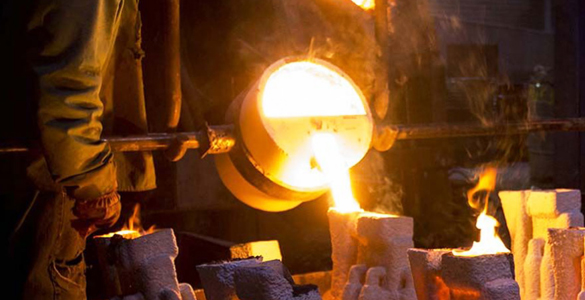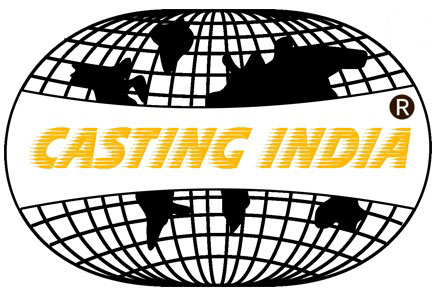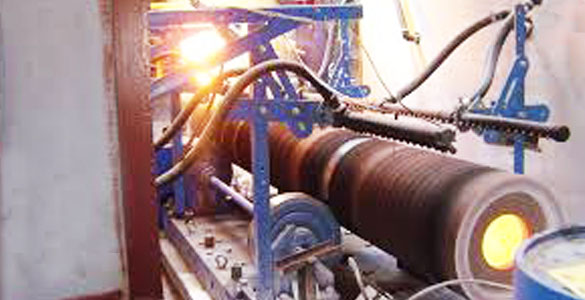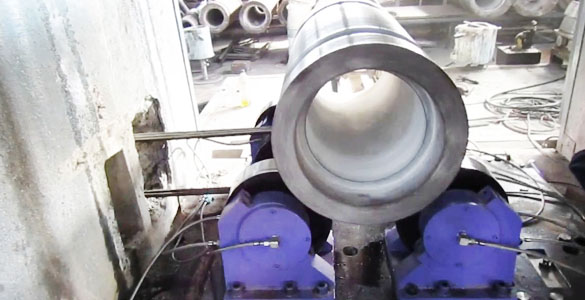
The centrifugal casting process employs centrifugal forcerather than gravity or applied pressureto produce cast hollow cylindrical parts and products. During such casting operations, the mold rotates at higher angular velocity about its central axis as molten metal pours into it. The rotation of the mold creates centrifugal force and kinetic energy, which pushes and keeps the metal to the mold’s outer wall. Once the metal has cooled and solidified, the mold can cease its spinning and the solid part can be removed. In addition to constructing the desired part, the centrifugal force also facilitates to collect the contaminants from the construction material with respect to density, as the lighter compoundssuch asslag oxidel deposits at inner lawyer and separate from the metal and move towards the center of the mold as well as the heavier impurities.
Thecentrifugal casting process is an appropriate manufacture technology for cylindrical and circular parts such as hydraulic cylinder, pressure vessels, high bulk strength, high impact strength, low volume and no significant defects in radiography test level I.
Greater strength:
The greater strength of parts produced using centrifugal casting is a result of higher density grain structures. As the process allows for more control over directional solidification, the grain structure is more uniform and its mechanical properties are almost equal in all directions. This higher structural density increases the life span of the component and allows for higher stress tolerances. Another factor that contributes to the enhanced part strength is higher product purity, which eliminates internal porosity and improves structural uniformity.
Increased product purity:
During the casting process, the spinning of the mold places extreme pressures on the molten material. This pressure causes lighter contaminants and impurities to separate from the denser metal. These impurities gather in the bore of the component, minimizing the risk of formation of weak points or areas of porosity within the metal structure. The machining process following casting removes these impurities, leaving a highly pure end-product.
Better production cost-efficiency:
Increased product purity also affects production cost-efficiency. As impurities gather at the interior surface of the part and are machined out, there is a reduction in the number of defective parts and rejects. The lack of porosity produced through the centrifugal casting process also allows manufacturers to use less metal and produce less material waste. In addition, faster setup and shorter production cycle times lead to improved production cost-efficiency.
Limitations of Centrifugal Casting
Although centrifugal casting offers several manufacturing advantages, the process is limited in its production capabilities and few limitations of centrifugal casting listed in the below:
Size:To avoid the creation of a parabola at the bottom of the casting—which increases machining time—the height-to-diameter ratio used in vertical casting is 2:1. This requirement limits the size of the produced part. In some cases, horizontal casting provides the solution to these limitation.
Internal diameters: Designs with smaller internal diameters also pose a challenge for centrifugal casting operations. The purity and strength advantages of centrifugal casting decrease as the inside diameters of the components decreases. The issue stems from the higher angular velocity required to produce the necessary G forces to form the cast product. Although these speeds are possible, there are significant safety issues related to operating at higher angular velocity.
Shape: The centrifugal casting process only provides production advantages to parts with a cylindrical geometric and symmetrical shape. Although other mold shapes are possible, the loss of the structural and purity benefits and the additional cost of the unique die and post-processing operations make its use impractical outside of producing cylindrical shapes.
Type of Centrifugal Casting:
- True Centrifugal Casting
- Semi-Centrifugal Casting
- Horizantal Centrifugal Casting
- Vertical Centrifugal Casting
Applications of Centrifugal Casting:
- Power Transmission
- Oil Industry
- Machine / Machine Tool Industry
- VMarine Industry
- Defence & Aerospace
- Automotive Industry



